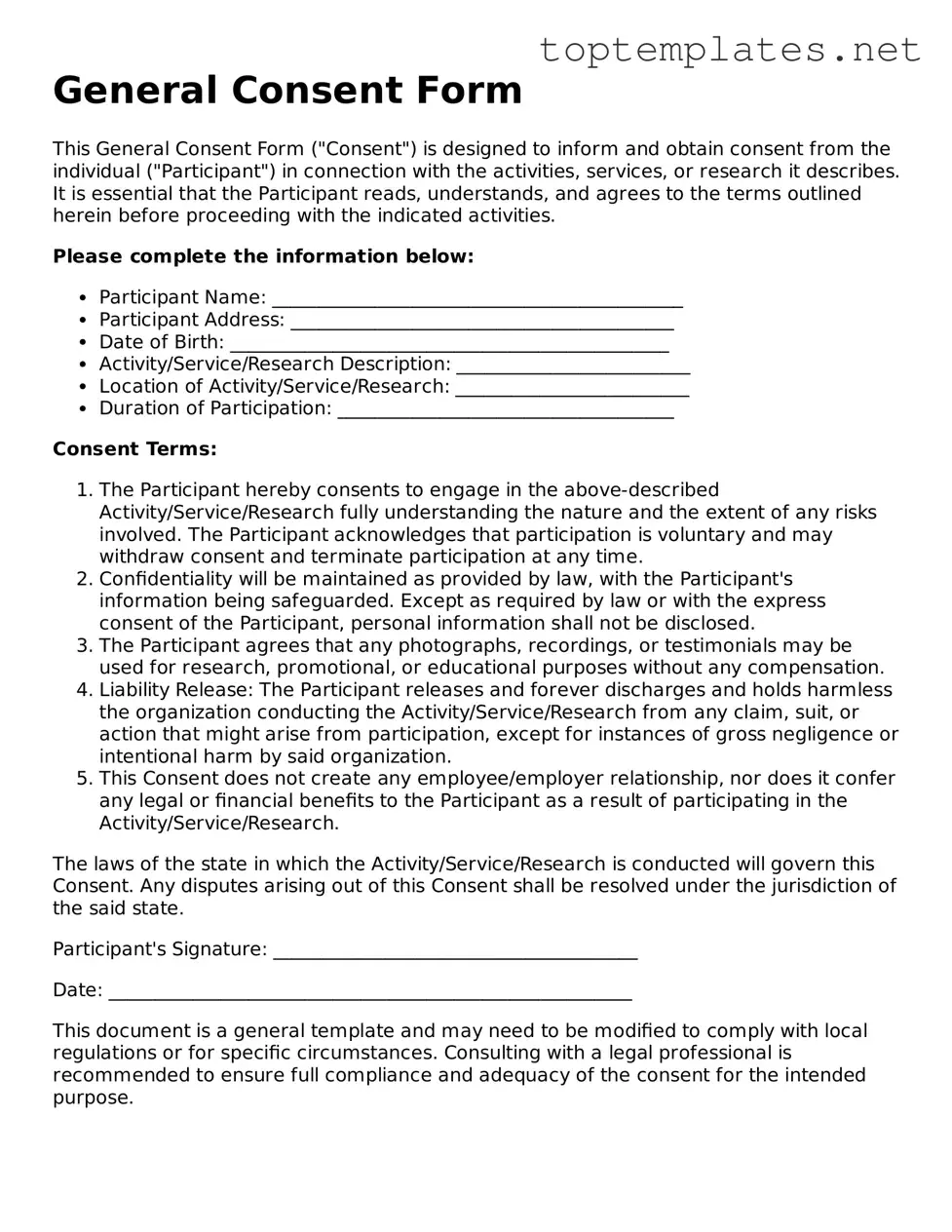What is a consent form?
A consent form is a document that is used to inform a participant about the details of a procedure, project, or activity, gaining their agreement to proceed. It serves to protect both the participant and the organization conducting the activity by ensuring that all parties are fully informed and agree to the terms and conditions set forth.
When is a consent form necessary?
A consent form is necessary whenever an activity involves collecting personal data, exposing participants to potential risks, or when the activity is not part of standard operations or expectations. This includes medical treatments, research studies, and any activities involving minors.
What information should a consent form include?
A consent form should clearly outline the purpose of the activity, procedures involved, potential risks and benefits, confidentiality terms, and the voluntary nature of participation. It should also include contact information for further questions, and a space for signatures.
How do you ensure a consent form is understood?
To ensure understanding, consent forms should be written in simple, clear language that is easily understood by the participant. It may also be beneficial to verbally explain the form and address any questions or concerns the participant might have before they sign.
Is verbal consent sufficient?
In some cases, verbal consent may be sufficient, particularly for low-risk activities. However, having a written consent form is generally preferred and required for most formal activities, especially those involving significant risk or personal data collection, to provide a record of consent.
What is the difference between informed consent and implied consent?
Informed consent is explicitly given by participants, typically in writing, after they have been fully informed about the activity's details and implications. Implied consent, on the other hand, is not explicitly granted but rather inferred from the participant's actions or the situation's context.
Can a participant withdraw consent after signing the form?
Yes, participants can generally withdraw their consent at any time after signing the form. This should be clearly stated in the consent form, including the procedure for withdrawing consent and any implications of doing so.
What happens if a participant is a minor?
If a participant is a minor, consent must be obtained from a parent or legal guardian. The consent form should be designed to collect consent from the guardian, and it may also be appropriate to obtain assent from the minor, depending on their age and understanding.
Are there any special considerations for digital consent forms?
For digital consent forms, it is important to ensure that the form complies with electronic signature laws and that the process of giving consent is secure and verifiable. Providing clear instructions on how to electronically sign and submit the form is also crucial.
How long should records of consent be kept?
Records of consent should be kept for as long as necessary to comply with legal and ethical obligations. This duration varies depending on the activity's nature and jurisdiction, but it generally extends for several years after the activity's completion or the participant's involvement ends.
